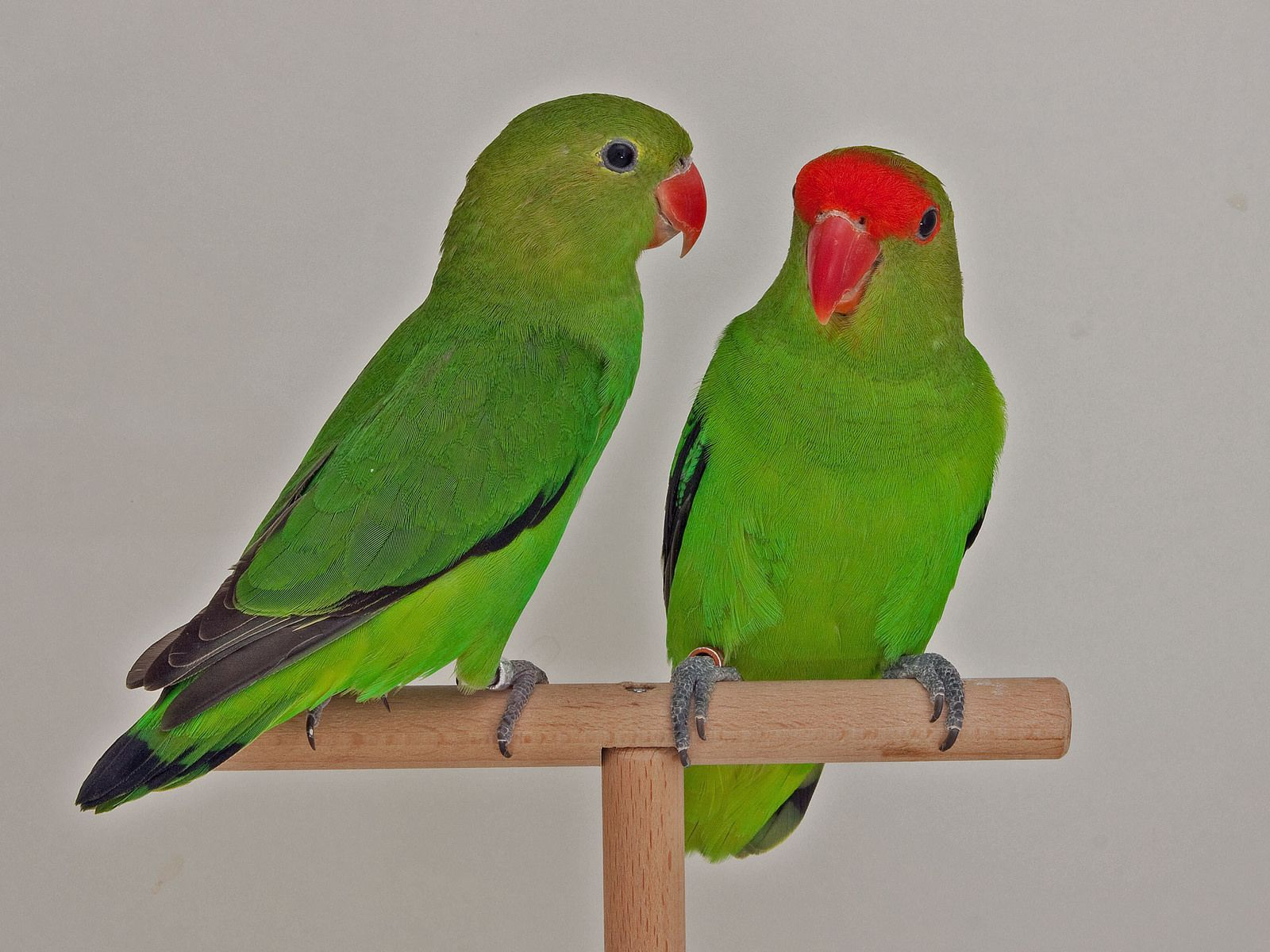Abyssinian Lovebird

Description
The Abyssinian lovebird (Agapornis taranta) also known as black-winged lovebird is a mainly green bird of the parrot family. At about 16.5 cm (6.5 inches) long, it is the largest of the lovebird genus, a group of small parrots. The adult male is easily identified by its red forehead, and the adult female by its all green head. They are native to Eritrea and Ethiopia, and they are uncommon as pets.
The black-winged lovebird, with a length of about 16–16.5 cm (6.25–6.5 inches), is the largest of all the lovebirds. It is sexually dimorphic, as are the red-headed lovebird and grey-headed lovebird of the lovebird genus. The dimorphism becomes apparent in juvenile birds after their first molt at about eight or nine months of age. Both the male and female black-winged lovebird are mostly green, and only the adult male black-winged lovebird has a red forehead and a ring of red feathers around its eyes.
The tail is black tipped and feathers below the tail show a yellowish colour. The rump and feathers above the tail are light green. In the male feathers under the wing are typically black, and in the female the feathers under the wing are typically greenish or brownish black. Both sexes have a red beak and gray feet.
The natural habitat for a black-winged lovebird is typically from southern Eritrea to southwestern Ethiopia and they normally live in either high plains or mountainous regions.
Scientific Name
Agapornis taranta
Country Of Origin
Eritrea and Ethiopia
Size
6.25 to 6.5 inches tall
Life Expectancy
10 to 20 years
Noise Level
Relatively low, one of the least noisy lovebird species
Talk / Trick Ability
Lovebirds rarely talk, but they can learn to mimic human speech if taught at a very young age. Because this species loves climbing and playing, as well as interacting with their pet bird owners, they can learn to do tricks.
Characteristics
The Abyssinian lovebird is highly social and as a pet, is most commonly kept in pairs because of their need for constant companionship and mutual preening. They are a hardy species and come from mountainous regions. They need space to fly, climb and play, and are quite active and need a lot of toys and stimulation to keep them engaged and healthy. This species can be very affectionate when hand-raised, yet if kept singly, it will need a lot of human interaction and time to stay tame. Because there is a limited quantity of these parrots, most are entered into breeding programs.
Behavior / Health Concerns
Because the Abyssinian lovebird is social, it is thought best to keep them in pairs rather than singly to keep them happy and healthy. Although this species is quieter than many lovebirds, they have been known to call out in the middle of the night when they get upset. Additionally, because the Abyssinian lovebird eats seeds, berries and fruits, such as sycamore figs and juniper berries in the wild, a similar diet, with a higher fat content than other lovebirds, is required for them.
Expert Advice
“It can take a full year before the male [Abyssinian lovebirds] develop their beautiful red coloring.”
Carolyn Punola, Parrot Addiction Aviary LLC, Flanders, New Jersey